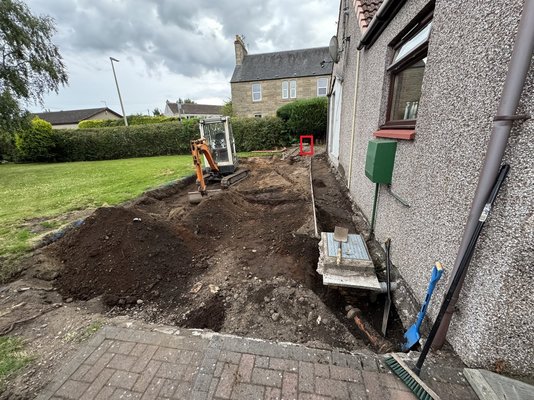scottmk1
Member
- Messages
- 1,990
- Location
- Scotland
On the other side of the wall where the yellowish pipe comes downWhere is the present boiler situated?
On the other side of the wall where the yellowish pipe comes downWhere is the present boiler situated?
I'm clearly missing something, the boiler is not in the kitchen, upstairs somewhere?On the other side of the wall where the yellowish pipe comes down
No it’s in the loftI'm clearly missing something, the boiler is not in the kitchen, upstairs somewhere?

 and the gas emergency team got there PDQ.
and the gas emergency team got there PDQ. Proper tail between legs job... They fixed it same day and - no invoice. After witnessing that "conversation" the builders knew to keep on her good side...
Proper tail between legs job... They fixed it same day and - no invoice. After witnessing that "conversation" the builders knew to keep on her good side... They were really nice, to be fair...
They were really nice, to be fair...

How do you know Gaz is correct??? Do you know what appliances he has in the house? 30kw Combi, gas fire, large range cooker? Maybe it needs to be 28mm? How long will the pipe be? How many tees and bends? I’m an ex gas engineer and came across far too many undersized supplies due to people using rule of thumb methods.It doesn't matter,@gaz1 is correct, it has to be a minimum of 22mm, ( and in some cases larger ), same goes for replacement CH boilers, 22mm from meter to the boiler and any gas cooker/hob, you can use 15mm tails however.
It's been that for some time but often gets ignored by CH installers.
Do such copper supply pipes have to be in an open ended copper sleeve as they pass through the wall these days , so the pipe can slide about due to variations in temperature ?This might be a technical point, but may I ask what the regulations actually say? Do they state a minimum pipe diameter or do they specify a maximum pressure drop?
I was under the impression that 22mm is more a practical necessity to ensure the allowed pressure drop is not exceeded.
Gaz was correct when they said 22mm and I said " or larger ".How do you know Gaz is correct??? Do you know what appliances he has in the house? 30kw Combi, gas fire, large range cooker? Maybe it needs to be 28mm? How long will the pipe be? How many tees and bends? I’m an ex gas engineer and came across far too many undersized supplies due to people using rule of thumb methods.
Do such copper supply pipes have to be in an open ended copper sleeve as they pass through the wall these days , so the pipe can slide about due to variations in temperature ?
Its not to do with temperature variation as a gas pipe won't freeze and burst.Do such copper supply pipes have to be in an open ended copper sleeve as they pass through the wall these days , so the pipe can slide about due to variations in temperature ?
Only if internal should a gas sleeve be sealed both ends, from the outside in, one end only should be sealed.there sleeved and sealed both ends from the gas meter to inside in case of leak in the cavity .as if so god knows where the gas will end up and could ignite you havent to drill any holes in the cabinet for earth bonding unless it enters from the front bottom outside or next to the gas pipe in the duct and sealed
Yep IIRC that's what my qualified gas fitter did 28 years ago when we took gas out to the garage Baxi heater . Got a shock to find a 15 mm copper tube running across the lounge off th kitchen internal wall cooker point to a wall mounted gas fire a few mm below level in the floor screed and punctured by the a nail in a carpet gripper it had been like that for about 12 years( 1980 from new build )
They are wrong, through adjoining rooms internally, both ends sealed, from outside in, usually end open to the outside but there is this train of thought and in practise where sleave enters from outside in, the internal side is left open.
Yes I’m doing that with the drains, I need the water supply out of the way first as the existing drains appear to also follow the same route out to the road, the area I’ve dug out is big enough to get the machine in and dig the foundations too. I’m waiting on the structural engineer to get back to me as the existing foundations are very shallow and I’m not sure how I go about integrating the new ones to the old onesthe one thing i will say is dig up your block paving and get your new drain manhole dug out while you can then you can get your new drain pipes in and then lintel over them so everything is on the outside
also if you dig a little wider you can get your new drains run around the property while you have that mini digger there

